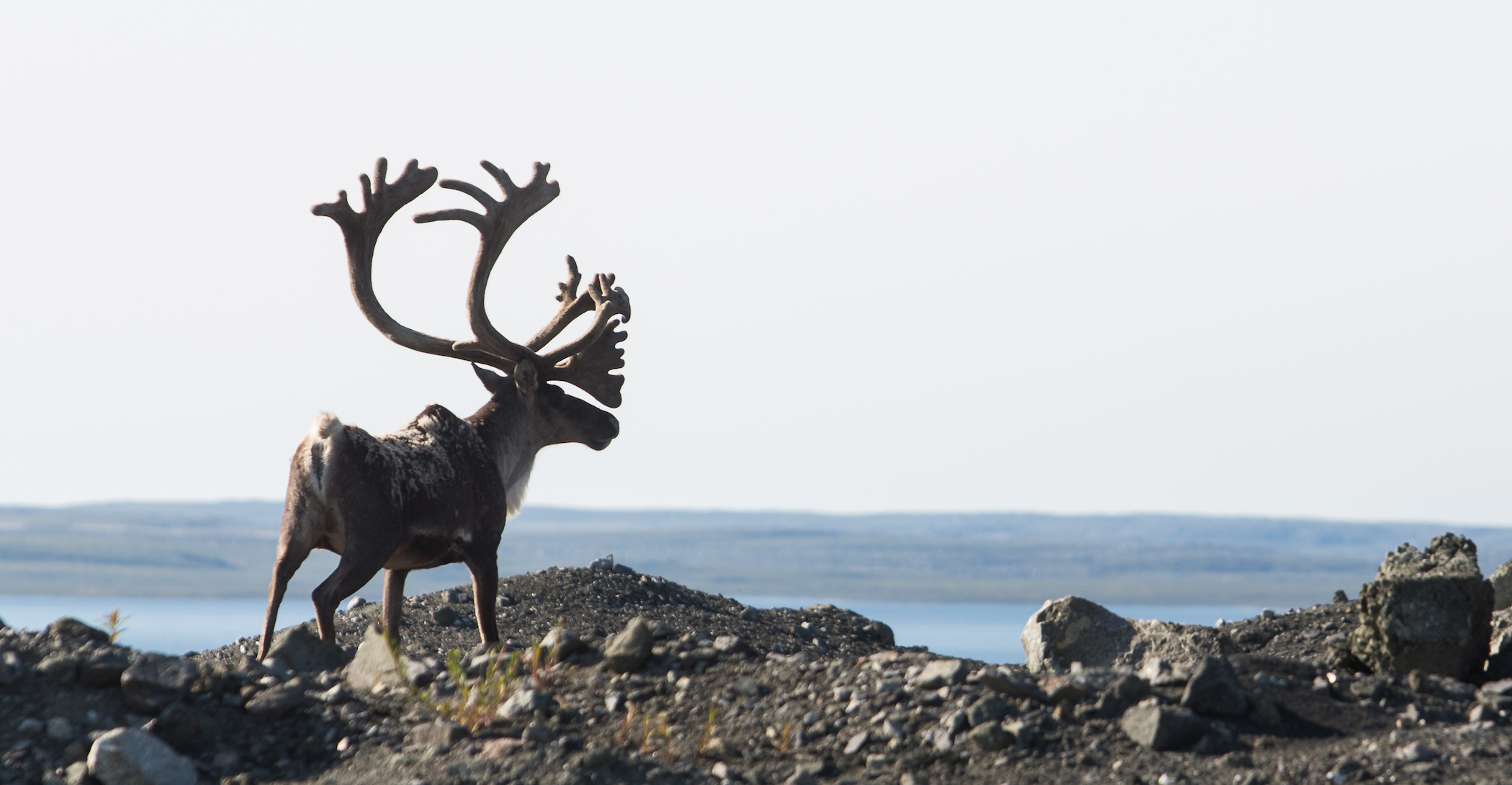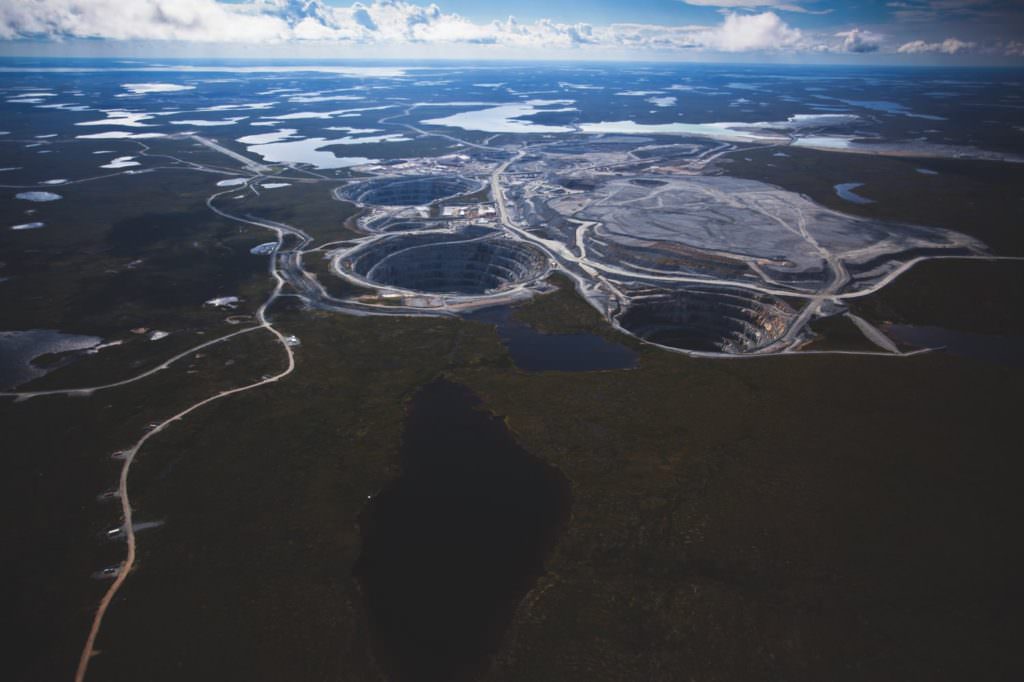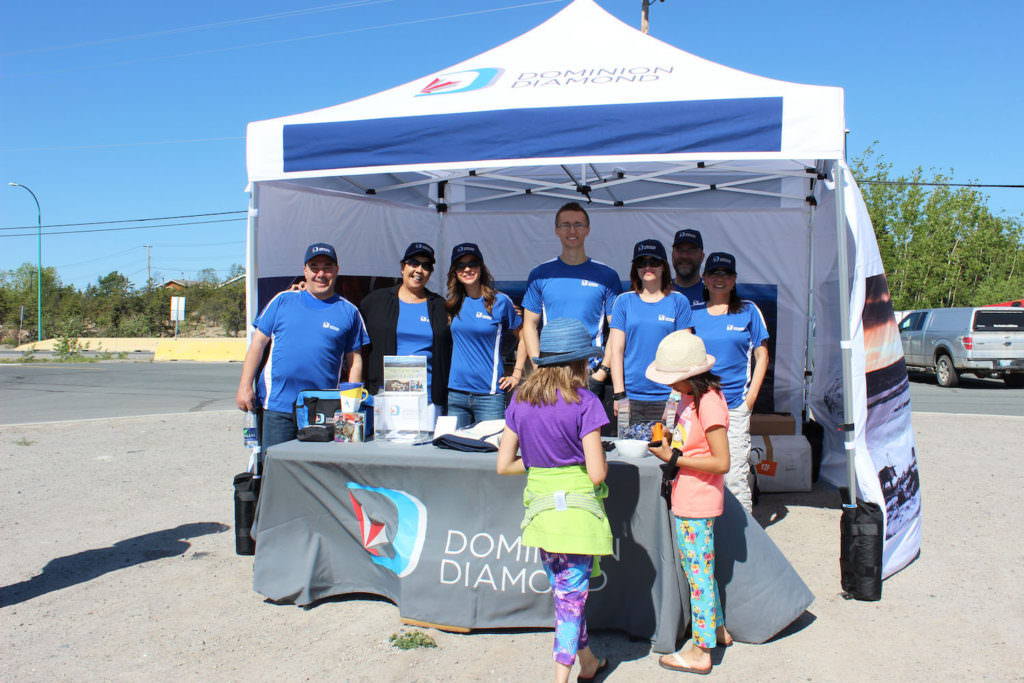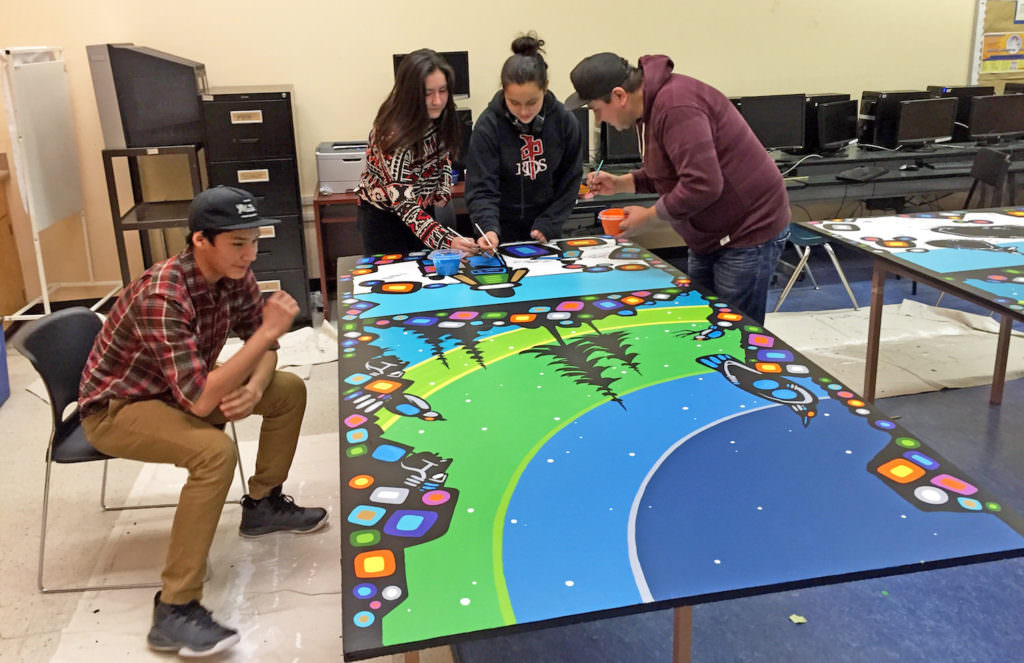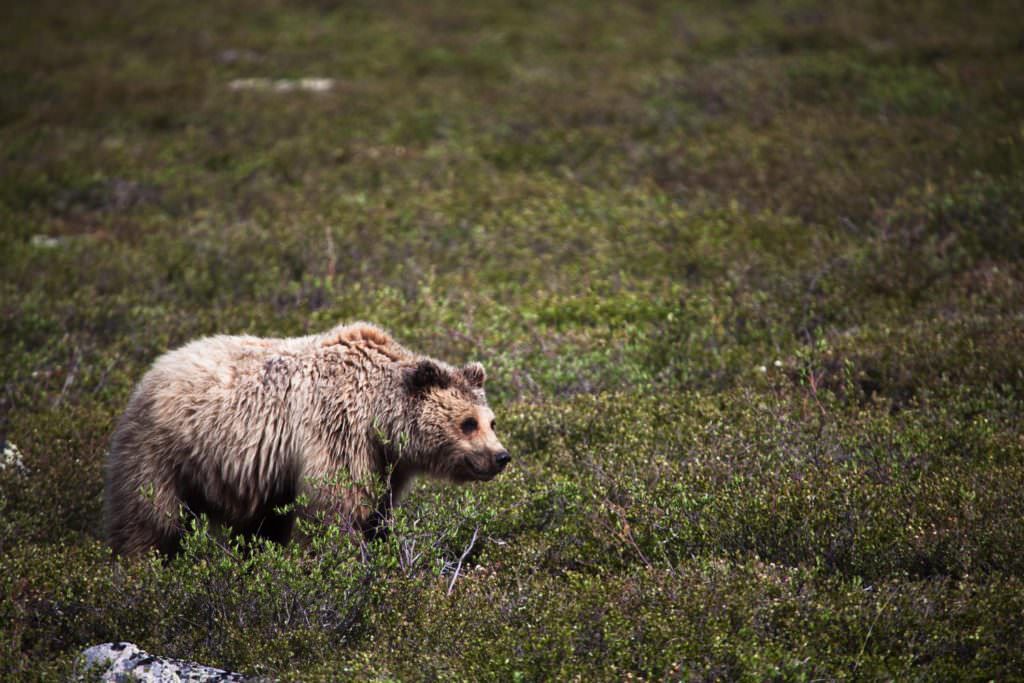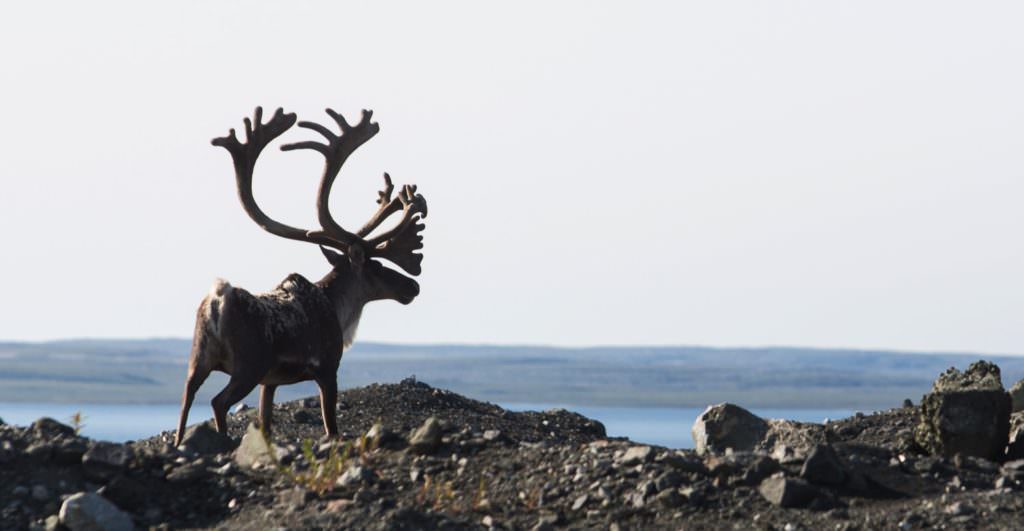To the people of the Northwest Territories, the land and wildlife are closely connected with their culture and values.
Located just 200 kilometers south of the Arctic Circle, the land around the Ekati Diamond Mine is strewn with boulder fields, tundra, wetlands and over 8,000 glistening lakes. These are the traditional lands of Aboriginal people who have lived in the area for centuries.
“Ekati” is the name given by the Dene and Tlicho tribes to the area around Lac de Gras lake in this beautiful region. “Ekati” means “fat lake,” a reference to layers of white quartz veins in the rock surrounding this body of water. The quartz is said to resemble the fat found in caribou meat, a traditional food source for the people of these communities.
The discovery of kimberlite pipes in the region in the 1980s proved there was natural bounty more valuable than quartz buried under the tundra. Kimberlite pipes are where diamonds are found, formed in the Earth’s crust billions of years ago and thrust up to the Earth’s surface through volcanic eruptions. In 1998, the predecessor to the Dominion Diamond Corporation opened the Ekati Diamond Mine, with the Diavik Diamond Mine soon to follow. The mining industry brought jobs and economic opportunity to the region, while partnerships with Aboriginal people and a commitment to conserving pristine flora and fauna were given priority.

At the Ekati mine, Elders from Aboriginal groups are invited on excursions to the mine site and take part in the planning, construction, and reclamation of mine waste rock piles, among other projects. The company regularly meets with Elders and youth from the communities to discuss partnerships and take advice from Aboriginal stakeholders. They also offer training programs and employment opportunities to the region’s youth, giving them the skills they need for their future.
Community outreach projects supported by Dominion Diamond make it easier for the communities to preserve their Traditional Knowledge for future generations. The SA wellness program, for example, puts youth education and cultural preservation in a central position. At Łutsel K’e Dene School, an Aboriginal student population learns the usual subjects like math and English, while taking special courses that teach them about their unique cultural background. The program recently supported a cultural camp and organized a workshop where kids created murals with the help of local artist John Rombough. “There’s a lot of talent” and a very positive atmosphere in the workshop, said Rombough, whose students painted winter scenes featuring wolves and the northern lights—themes emblematic of life in the vast North.
It’s not uncommon to see caribou, grizzly bears, wolves, foxes and nesting birds around the diamond mines, all of which Dominion Diamond tracks to ensure their continued well-being.
To learn more about the area’s grizzly bear population, the company paired with Rio Tinto, their joint venture partner in the Diavik Diamond Mine, to design and implement the award-winning Grizzly DNA monitoring program. To collect their DNA, the companies made use of the Traditional Knowledge of community Elders, whose collective knowledge of grizzlies spans centuries. The team constructed bait posts that trapped a small hair sample from each bear—exactly what was needed to accurately track them.
The longitudinal study not only determined the bear population was stable and in some places, growing, but was also given the 2015 Environmental Excellence Award by Towards Sustainable Mining for the success of the project.
Thanks to the conservation efforts of Dominion Diamond Corporation and the desire to give back to the local communities in northern Canada, this sub-arctic region will retain its natural beauty for years to come, while its Aboriginal populations continue to benefit from jobs and economic opportunities.

